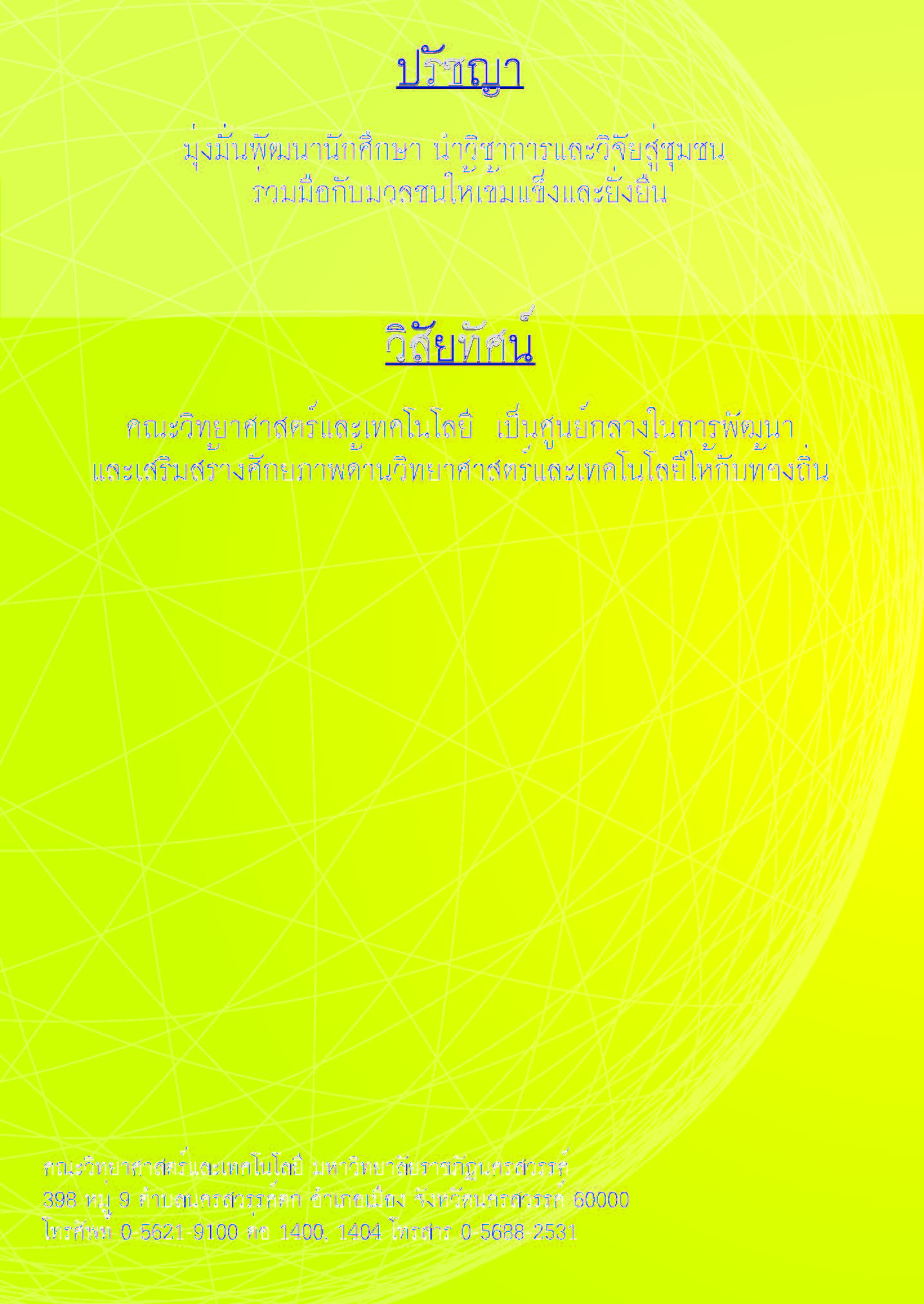การเปลี่ยนแปลงคาบการแปรแสงของระบบดาวคู่แบบแตะกัน 5 ระบบ คือ CE Leonis, DF Hydrae, FZ Orion, YY Eridani และ FG Hydrae
Main Article Content
Abstract
การศึกษาการเปลี่ยนแปลงคาบการแปรแสงของระบบดาวคู่แบบแตะกันทั้ง 5 ระบบนี้ ได้ทำ การสังเกตการณ์ในเดือนมกราคมและกุมภาพันธ์ พ.ศ. 2552 ณ หอดูดาวสิรินธร มหาวิทยาลัยเชียงใหม่ โดยใช้กล้องโทรทรรศน์แบบสะท้อนแสงชนิดริชชี-เครเทียน (Ritchey-Chretien) ขนาดเส้นผ่าน ศูนย์กลาง 0.5 เมตร ต่อเข้าด้วยกล้องซีซีดีโฟโตมิเตอร์ SBIG ST10-XME ขนาด 1024x1024 พิกเซล โดยใช้แผ่นกรองแสงระบบยูบีวี (UBV System) เฉพาะสีน้ำเงิน สีเหลือง และสีแดง จากการวิเคราะห์ พบว่า ระบบดาวคู่ CE Leonis มีคาบการแปรแสงลดลงด้วยอัตรา 7.09x10-4 วินาทีต่อปี ซึ่งสอดคล้องกับ ทฤษฎี Angular Momentum Loss (AML) ส่วนระบบดาวคู่ DF Hydrae, FZ Orion, YY Eridani และ FG Hydrae มีคาบการแปรแสงเพิ่มขึ้นด้วยอัตรา 0.011982 , 0.004113 , 0.011324 และ 0.013541 วินาทีต่อ ปีตามลำดับ ซึ่งสอดคล้องกับทฤษฎี Thermal Relaxation Oscillation (TRO) สำหรับระบบดาวคู่ DF Hydrae ยังมีลักษณะการเปลี่ยนแปลงแบบเป็นคาบซ้อนอยู่ นั่นหมายความว่าระบบดาวคู่นี้มีแนวโน้มที่ จะมีวัตถุที่สาม (Third Body) อยู่ในวงโคจร โดยมีระยะห่างจากระบบดาวคู่นี้ประมาณ 6.808 AU และมี คาบการโคจรประมาณ 62.43 ปี
Period change study of these 5 contact binary systems were observed in January – February 2009 at Princess Sirindhorn Observatory, Chiang Mai University. The observation used 0.5 metres Ritchey-Chretien reflecting telescope and CCD Photometer SBIG ST10-XME 1024x1024 pixels with blue, visual and red filters of UBV system. The analysis shows that the period change of CE Leonis is decreasing with 7.09x10-4 seconds/year that is corresponding to Angular Momentum Loss (AML) theory but DF Hydrae, FZ Orion, YY Eridani and FG Hydrae are increasing with 0.011982, 0.004113, 0.011324 and 0.013541 seconds/year, respectively. These are corresponding to Thermal Relaxation Oscillation (TRO) theory. For the binary system DF Hydrae shows that a periodic oscillation is superimposed on this curve. This change can be explained by the presence of a third body with distance about 6.808 AU and period around 62.43 years.


